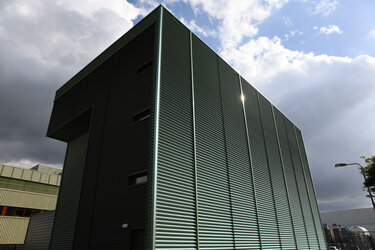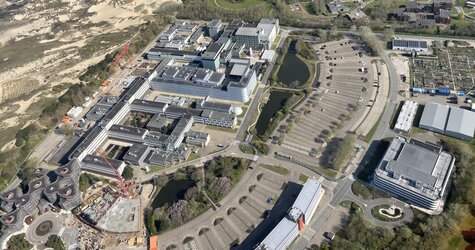Accept all cookies Accept only essential cookies See our Cookie Notice

About ESA
The European Space Agency (ESA) is Europe’s gateway to space. Its mission is to shape the development of Europe’s space capability and ensure that investment in space continues to deliver benefits to the citizens of Europe and the world.
Highlights
ESA - United space in Europe
This is ESA ESA facts Member States & Cooperating States Funding Director General Top management For Member State Delegations European vision European Space Policy ESA & EU Space Councils Responsibility & Sustainability Annual Report Calendar of meetings Corporate newsEstablishments & sites
ESA Headquarters ESA ESTEC ESA ESOC ESA ESRIN ESA EAC ESA ESAC Europe's Spaceport ESA ESEC ESA ECSAT Brussels Office Washington OfficeWorking with ESA
Business with ESA ESA Commercialisation Gateway Law at ESA Careers Cyber resilience at ESA IT at ESA Newsroom Partnerships Merchandising Licence Education Open Space Innovation Platform Integrity and Reporting Administrative Tribunal Health and SafetyMore about ESA
History ESA Historical Archives Exhibitions Publications Art & Culture ESA Merchandise Kids Diversity ESA Brand Centre ESA ChampionsLatest
Space in Member States
Find out more about space activities in our 23 Member States, and understand how ESA works together with their national agencies, institutions and organisations.
Science & Exploration
Exploring our Solar System and unlocking the secrets of the Universe
Go to topicAstronauts
Missions
Juice Euclid Webb Solar Orbiter BepiColombo Gaia ExoMars Cheops Exoplanet missions More missionsActivities
International Space Station Orion service module Gateway Concordia Caves & Pangaea BenefitsLatest
Space Safety
Protecting life and infrastructure on Earth and in orbit
Go to topicAsteroids
Asteroids and Planetary Defence Asteroid danger explained Flyeye telescope: asteroid detection Hera mission: asteroid deflection Near-Earth Object Coordination CentreSpace junk
About space debris Space debris by the numbers Space Environment Report In space refuelling, refurbishing and removingSafety from space
Clean Space ecodesign Zero Debris Technologies Space for Earth Supporting Sustainable DevelopmentLatest
Applications
Using space to benefit citizens and meet future challenges on Earth
Go to topicObserving the Earth
Observing the Earth Future EO Copernicus Meteorology Space for our climate Satellite missionsCommercialisation
ESA Commercialisation Gateway Open Space Innovation Platform Business Incubation ESA Space SolutionsLatest
Enabling & Support
Making space accessible and developing the technologies for the future
Go to topicBuilding missions
Space Engineering and Technology Test centre Laboratories Concurrent Design Facility Preparing for the future Shaping the Future Discovery and Preparation Advanced Concepts TeamSpace transportation
Space Transportation Ariane Vega Space Rider Future space transportation Boost! Europe's Spaceport Launches from Europe's Spaceport from 2012Latest

Expanding ESTEC’s Test Centre
Thank you for liking
You have already liked this page, you can only like it once!
The ESTEC Test Centre is expanding. A new 350 sq. m cleanroom is being added to the Netherlands-based site, already Europe’s largest facility for satellite testing.
To begin with, 110 foundation piles have been inserted into the sandy soil, ranging in depth from 10 to 17 m. Now ground is being excavated to dig a connecting tunnel bringing power, data, heating and cooling infrastructure to the new cleanroom.
The ESTEC Test Centre is a 3000 sq. m environmentally-controlled complex nestled in dunes along the Dutch coast, filled with test equipment to simulate all aspects of spaceflight. It is part of ESA’s main technical centre, but is maintained and operated on a commercial basis on the Agency’s behalf by private company European Test Services (ETS) B.V.
Most of the time the ESTEC Test Centre has several test items within its walls simultaneously. Complex planning and traffic management are necessary to ensure every project get access to the facility they need at the time they need it. So sufficient room is required needs to accommodate the different programmes and allow their movement between test facilities.
“The new clean room will offer extra space to host satellites as they come on site,” explains Gaetan Piret, overseeing the Test Centre . “It will also host our sensitive micro-vibration measurement facilities, used to characterise the very low vibration generated by mechanisms mounted aboard satellites.”
The building work, led by Dutch company Heijmans, is intended to have as little impact on the rest of the site as possible, allowing the rest of the Test Centre to continue nominal operations.
“For this reason we rejected hammering in the piles,” explains Jan Trautmann of ESA Facilities Management, managing the construction project. “Instead ‘cast in place’ piles were used, involving drilling deep holes, then lowering a steel reinforcement and filling them with concrete. This method generates much less noise and vibration.”
Planned to take account of current COVID-19 restrictions, the aim is to complete the new building by next summer, which will then be linked via large corridor to the current building.
-
CREDIT
ESA -
LICENCE
ESA Standard Licence

ESA’s Test Centre expands

ESA’s technical centre expands

The ESTEC Corporate Video 2003

Vibration tests















 Germany
Germany
 Austria
Austria
 Belgium
Belgium
 Denmark
Denmark
 Spain
Spain
 Estonia
Estonia
 Finland
Finland
 France
France
 Greece
Greece
 Hungary
Hungary
 Ireland
Ireland
 Italy
Italy
 Luxembourg
Luxembourg
 Norway
Norway
 The Netherlands
The Netherlands
 Poland
Poland
 Portugal
Portugal
 Czechia
Czechia
 Romania
Romania
 United Kingdom
United Kingdom
 Slovenia
Slovenia
 Sweden
Sweden
 Switzerland
Switzerland

























